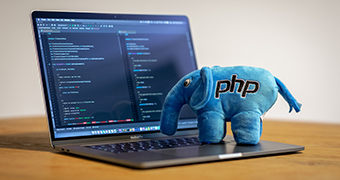Category
Networking

Description
This course is for you if you want to ace the Cisco Certified Network Associate CCNA exam and launch a successful IT and networking career! It provides you with a thorough comprehension of all the ideas and subjects required to pass the Cisco CCNA 200-301 exam and obtain the most in-demand networking certification available today.
The CCNA 200-301 test has taken the position of the CCNA 200-125, which was discontinued in February 2020.
Course Content
3 Modules • 4 months
- A (Very) basic Introduction to Networking.
- The OSI Reference Model Overview
- The TCP/IP Stack
- The Upper OSI Layers
- The Lower OSI Layers
- Cisco Operating System
- Making the Initial Connection to a Cisco Device
- Navigating the Cisco IOS Operating System
- Cisco IOS Configuration Management.
- Connection Media Types
- Ethernet
- MAC Addresses
- The IP Header
- Unicast, Broadcast and Multicast
- How to Count in Binary
- IPv4 Addresses
- Calculating an IPv4 address in Binary
- The Subnet Mask
- Slash Notation
- Class A IP Addresses
- IP Address Classes B and C
- IP Address Classes D and E
- Classless Inter-Domain Routing
- Subnetting Overview
- Subnetting Class C and VLSM
- Subnetting Large Networks
- Subnetting on the 4th Octet
- Subnetting on the 3rd Octet
- Private IP Addresses
- The Transport Layer Header
- TCP, UDP and Port Numbers
- Switches vs Hubs
- Switch Operation
- Routers
- Other Cisco Devices
- DNS The Domain Name System
- ARP Address Resolution Protocol
- ARP for Routed Traffic
- Basic Router and Switch Configuration
- The Setup Wizard
- Speed and Duplex Settings
- CDP and LLDP
- Basic Layer 1 and 2 Troubleshooting
-
Troubleshooting Methods
- Top Down, Bottom Up, Divide and Conquer
- Compare Configurations, Trace the path and Swap out components
-
Connectivity Troubleshooting Methods
- Ping, Traceroute and Telnet
- The Boot Up Process
- Factory Reset and Password Recovery
- Backing up system Image and Configuration
- Upgrading IOS
- Licensing
- Connected and Local Routes
- Static Routes
- Summarization, Default Routes and Load Balancing
- Summary Routes and Longest Prefix Match
- Dynamic Routing Protocols vs Static Route
- Routing Protocol Types
- Routing protocol Metrics
- Equal cost Multi path
- Administrative Distance and Loopback Interfaces
- Adjacencies and Passive Interfaces.
- RIP and EIGRP
- OSPF characteristics
- OSPF Basic Configuration
- OSPF Advanced Topics
- OSPF Areas
- Bandwidth vs Clock Rate and Speed
- OSPF Adjacencies
- OSPF DR and BDR Designated Routers
- Campus LAN Design – Core, Distribution and Access Layers
- Spine-Leaf Network Design
- VLAN Access and Trunk Ports
- DTP Dynamic Trunking Protocol and VTP VLAN Trunking Protocol
- Router with Separate Interfaces
- Router on a Stick
- Layer 3 Switch
- Cisco DHCP Server
- External DHCP Server
- Cisco DHCP Client
- Network Redundancy
- FHRP First Hop Redundancy Protocols
- HSRP Hot Standby Router Protocol
- HSRP Advanced Topics
- Spanning-Tree Terminology – The Bridge
- How Spanning Tree Works
- Spanning Tree Versions
- Manipulating the Root Bridge Election
- Portfast, BPDU Guard and Root Guard
- STP Troubleshooting
- EtherChannel Load Balancing
- EtherChannel Protocols and Configuration
- Layer 3 EtherChannel
- Wireless Network Types
- Infrastructure Mode and Wireless Access Points
- Wireless Lan Controllers and CAPWAP
- Wireless Channels and Radio Frequencies
- Wireless Security
- DHCP Snooping
- DAI Dynamic ARP Inspection
- 802.1x Identity Based Networking
- Preventing Unauthorized Devices with Port Security
- Locking Port to Hosts with Port Security
- Access Control Lists
- Standard, Extended and Named ACLs
- ACL Syntax
- ACL Operations
- IPv4 Address Exhaustion and NAT
- Static NAT
- NAT Translations
- Dynamic NAT and Port Address Translation
- The IPv6 Address Format
- IPv6 Global Unicast Addresses
- EUI-64 Adressess
- Unique Local and Link Local Addresses
- SLAAC Stateless Addresses AutoConfiguration
- Ipv6 Static Routes
- WAN Overview
- VPN – Virtual Private Networks
- WAN Connectivity Options
- Leased Lines
- MPLS Multi Protocol Label Switching
- PPPoE Point to Point Protocol Over Ethernet
- WAN Topology Options
- Common Attacks
- Firewalls and IDS/IPS
- Firewalls vs Packet Filters
- TLS Transport Layer Security
- AAA Authentication, Authorization and Accounting
- Global Security Best Practices
- Syslog
- Terminal Monitor and Logging Synchronous
- SNMP Simple Network Management Protocol
- QoS Overview
- Classification and Marking
- Congestion Management
- Policing and Shaping
- Defining Cloud Computing
- Server Virtualization
- Virtualizing Network Devices
- Cloud Service Models
- Cloud Deployment Model and Cloud Computing Advantages
- The Benefit of Network Automation and Programmability
- Data Serialization Formats: XML, JSON and YAML
- APIs – CRUD, REST and SOAP
- Configuration Management Tools – Ansible, Puppet and Chef
- SDN Software Defined Networking
- Software Defined Architecture – DNA Center, SD – Access, SD- WAN






